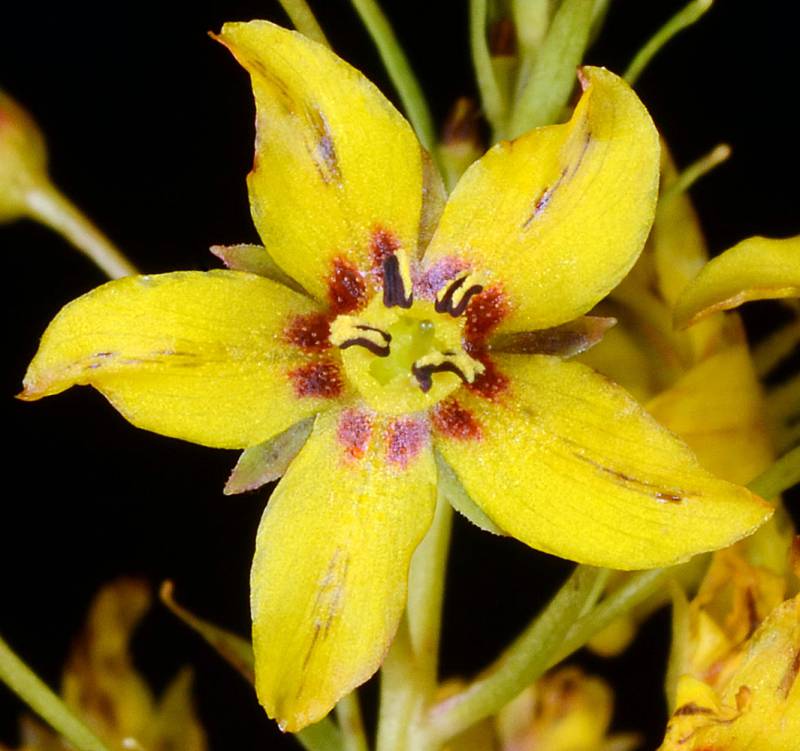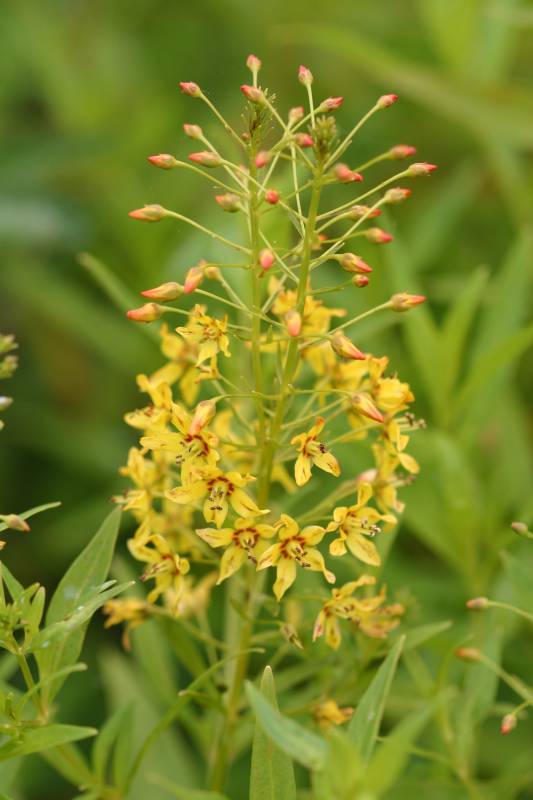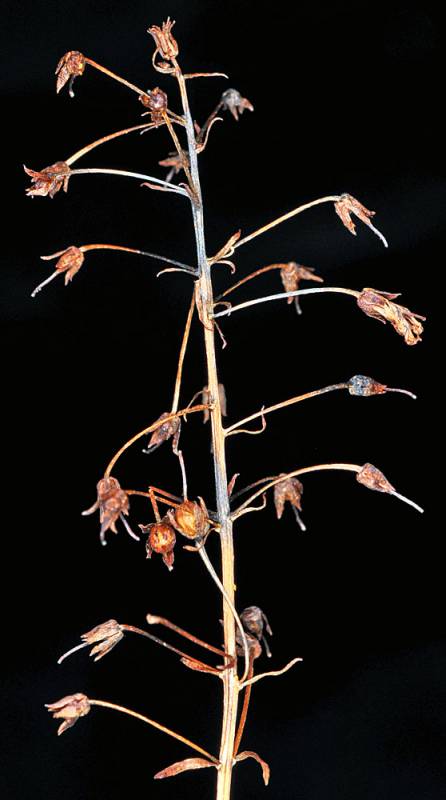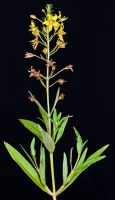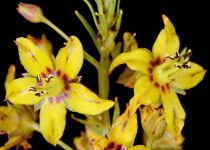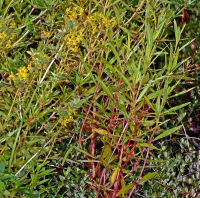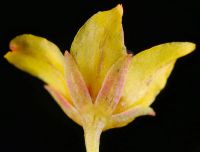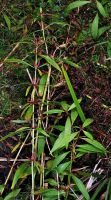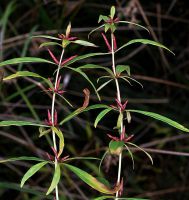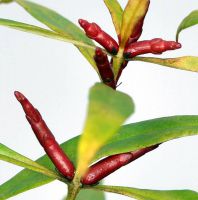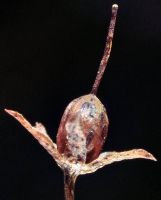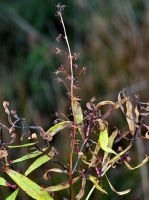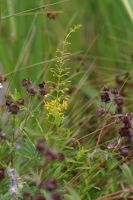Distribution: Occurring west of the Cascades crest along the coast in Washington; British Columbia to Oregon and Idaho; native and abundant in central and eastern North America.
Habitat: Cultivated cranberry bogs, and swamps.
Flowers: June-August
Origin: Introduced from eastern North America
Growth Duration: Perennial
Conservation Status: Not of concern
Pollination: Bees, flies
Erect, glabrous herb from rhizomes, the flowering stems 2-9 dm. tall.
Lower leaves sessile and clasping, 5-15 mm. long; upper leaves opposite, petiolate, the blades linear-lanceolate to narrowly elliptic, 3-8 cm. long; sterile shoots often with bulblets in the leaf axils.
Flowers in terminal, leafy, bracteate, simple racemes, the lower flowers often whorled; pedicels slender, 1-2 cm. long; calyx lobes 5, united only at the base, lanceolate, 2-4 mm. long; corolla divided nearly to the base, rotate, yellow, with purplish-black streaks and spots, the 5 lobes oblong-lanceolate, 6-8 mm. long; stamens 5, exerted, opposite the corolla lobes; filaments 3 mm. long. united at the base.
Capsule opening by 5 valves.
Publication: Prelim. Cat. 34. 1888.
Lysimachia racemosa Lam.
Lysimachia stricta Aiton
Lysimachia terrestris (L.) Britton, Sterns & Poggenberg var. ovata (E.L. Rand & Redfield) Fernald
Viscum terrestre L.
PNW Herbaria: Specimen records of Lysimachia terrestris in the Consortium of Pacific Northwest Herbaria database
WA Flora Checklist: Lysimachia terrestris checklist entry
OregonFlora: Lysimachia terrestris information
E-Flora BC: Lysimachia terrestris atlas page
CalPhotos: Lysimachia terrestris photos

